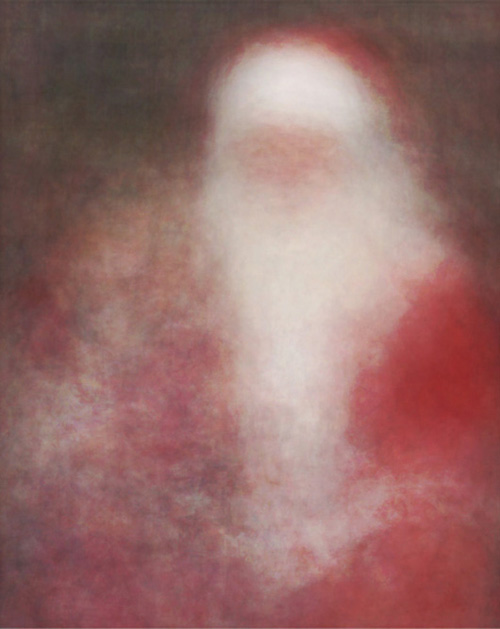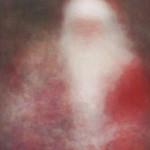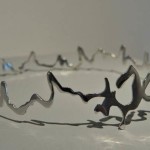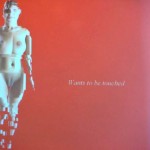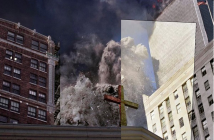PARSE @ AXIOM
PARSE: Visualizing Data That Makes Us Human is an exhibition that makes visible things that we know intuitively, yet rarely consider as visual data, much less art. Each piece takes on an unseen part of the human experience and seeks out a visual form to convey that experience, making art out of the data of life.
Two digital images by Jason Salavon, from the series 100 Special Moments, look at how people choose to capture experience, and the conventions of the images people used to mark important moments in their lives. 100 Special Moments (Newlyweds) presents a blending of 100 images taken from the internet, and blends them into an aggregate that is both blurry and non-photographic, and yet eerily recognizable and commonplace. Similarly, 100 Special Moments (Kids With Santa) presents a blurry yet identifiable childhood scenario. Interestingly, while the Newlyweds image image appears nearly static, Kids With Santa is much more dynamic, as the red and white shape of Santa remains still but the space where a child should sit on his lap is a blur, indicating the diversity of size, race, age and gender of the children who all share this common memory and sat on Santa's lap to create this generic tableau.
Fernanda Viegas and Martin Wattenberg also explore commonalities in their representations of desire. Their three works display the basic human feelings of lust and pleasure as they relate to the human body, creating images that both show these feelings and, perhaps, inspire them. The data for their pieces is derived from a computer interface, available in the gallery, in which the viewer is asked a number of questions about their desire relating to the human body. The most successful visualization is a video showing a nude male or female body, accompanied by the question posed and the data collected, followed by a dissection of the body into sections, each one magnified or diminished based on popularity. These are often paired in ways that juxtapose the personal with the external, such that "Wants To Touch" is followed by "Lover Wants To Touch", and the relationships we have with our own bodies versus what we desire from the bodies of others becomes visually exaggerated.
The most difficult piece in "PARSE" to access is the interactive projection by Ben Fry and Eugene Kuo, in which the turning of a dial produces a number of swirling, squiggly shapes that loop and chase each other in unpredictable ways. Across the bottom of the image, a series of numbers move in response to the dial, which are based on the mapped elements of human and animal genomes, which interact by some set of internal rules to produce the spirals created on the screen. The data moves from one form of abstraction -- a string of numbers and letters -- to another form of abstraction -- loops and spirals, a sparse visual tracing of the diversity of life.
Like Fry and Kuo, Jen Hall's beautiful sculptures attempt to turn abstract into the beautiful by converting the wave forms of the brain into objects. The fleeting, intangible pulse that makes up consciousness is here transformed into the physical, the permanent, shapes that exist in space and time in ways that thoughts cannot, except through the process of manifestation that art can provide.
"PARSE" presents four unique perspectives on how we perceive our bodies and experiences, both individually and collectively. As a "new media" show it turns the questions of technology back on its audience, using the power of science and media to ask timeless and fundamental questions about humanity.
- Jason Salavon, 100 Special Moments (Kids With Santa), digital c-print, 2004.
- Jennifer Hall, Epileptiforms: 5 Rem, from the Consciousness as a Property of Matter Series, Rapid Prototyping to Lost Wax Casting to Sterling Silver, 2002
- Fernanda Viegas and Martin Wattenberg, Sorting Out Desire, 2009. More about this project at the artists’ website.
"PARSE: Visualizing Data That Makes Us Human" is on view March 27th - May 10th, 2009 at Axiom.
All images are courtesy of the artist and Axiom Gallery.
Salavon image via the artists website.

